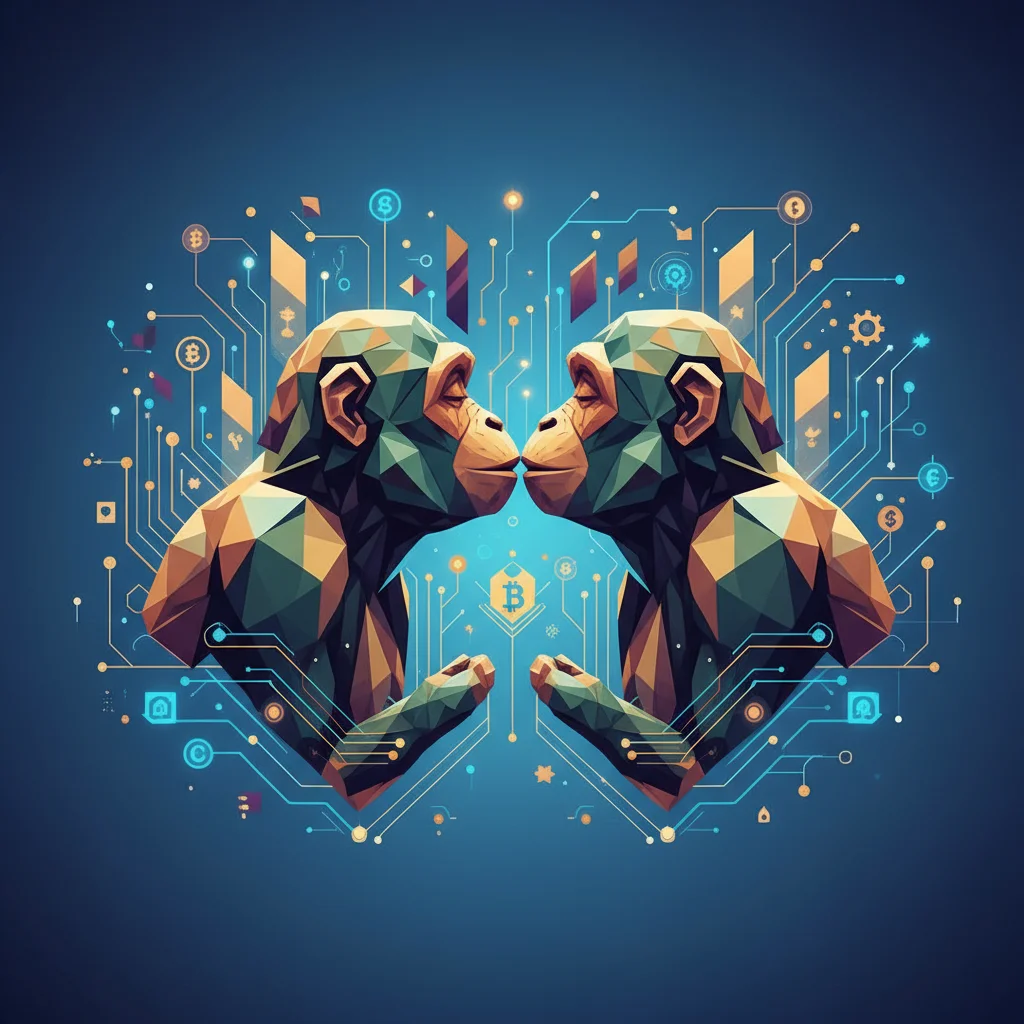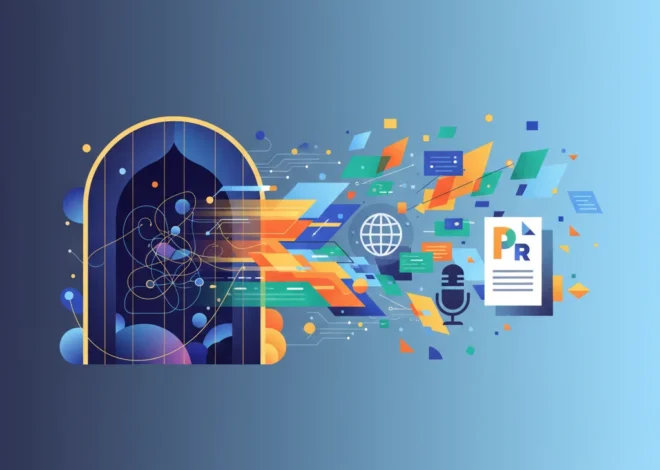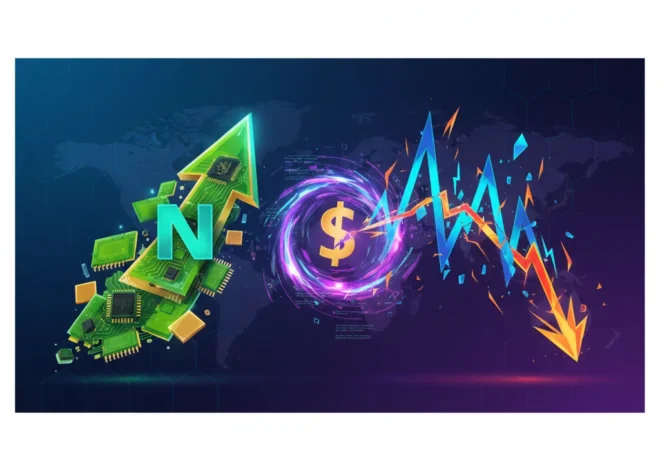
The 21-Million-Year-Old Kiss: What Ancient Apes Can Teach Us About Blockchain and the Future of Finance
In the fast-paced world of high finance, where algorithms execute trades in microseconds and global markets shift on a tweet, it’s easy to believe we operate in a realm detached from the primal forces of nature. We talk of risk models, derivatives, and decentralized ledgers. Yet, a recent scientific revelation pulls us back to a startlingly ancient origin. A study suggests that the simple act of kissing—a gesture of affection and intimacy—may have evolved with our ape ancestors some 21 million years ago.
At first glance, this discovery seems worlds away from the concerns of investors, finance professionals, and business leaders. But what if I told you that the evolutionary drivers behind that first prehistoric kiss are the very same forces shaping the future of our entire global economy? The kiss was not merely about romance; it was a sophisticated, biological mechanism for risk assessment, information exchange, and, most importantly, the establishment of trust. It was, in essence, the original transaction protocol. By tracing the evolution of this primal act of verification, we can unlock a powerful new lens through which to understand the trajectory of finance—from the handshake deal to the cryptographic signature of the blockchain.
The Primal Ledger: Kissing as Biological Due Diligence
Before contracts, currency, or even complex language, early hominids faced a fundamental challenge: how to determine if a potential partner was a sound “investment.” A mate who was unhealthy could be a liability, threatening the survival of offspring and the group. The solution, it appears, was the kiss. Far from being a simple peck, this was a rich data exchange. Saliva carries a wealth of information about a person’s health, hormonal status, and genetic compatibility. A kiss was a taste-test, a microbial handshake, and a primitive background check all rolled into one. It was a mechanism to mitigate risk and build a bond—a trusted partnership—based on direct, verifiable biological data.
This ancient act of verification is a perfect parallel to the dawn of human commerce. The earliest forms of trading were built on the same principles. In a small community, transactions were personal. You knew the farmer who grew your grain, the artisan who forged your tools. Trust was established through reputation, proximity, and the literal handshake—a physical gesture of agreement and mutual risk. This was the marketplace equivalent of the kiss: a direct, one-to-one validation. The integrity of the entire local economy depended on these personal, verifiable bonds. However, just as social groups became too large for everyone to know each other intimately, so too did our economic systems.
Beyond the Boarding Pass: Ryanair's Digital Gambit and Its Ripple Effect on Finance and Investing
From Handshake to Institution: Scaling Trust in a Complex World
As societies grew, the one-to-one trust model became a bottleneck. You couldn’t personally vet every merchant in a bustling city or every partner in a long-distance trade route. The “kiss” of a direct handshake was no longer scalable. This created a demand for a new technology of trust: the intermediary.
This is where the foundations of modern banking and finance were laid. Institutions like banks, guilds, and eventually, stock exchanges emerged as trusted third parties. They didn’t eliminate the need for trust; they centralized and standardized it. A letter of credit from a reputable bank was a proxy for a personal guarantee. A stock certificate, traded on a regulated exchange, was a stand-in for a direct ownership stake and a handshake with a company’s founder. Legal contracts, enforced by courts, became the codified version of a promise.
These institutions acted as the guarantors of the “kiss,” allowing for an explosion in the scale and complexity of economic activity. The stock market could flourish because investors trusted the exchange to ensure fair dealing. Global trade could expand because banks underwrote the risks. This institutional layer was a monumental innovation, but it came at a cost. It introduced layers of bureaucracy, fees, and new forms of systemic risk. Trust was no longer peer-to-peer but mediated through powerful, and fallible, gatekeepers.
To better understand this progression, consider the parallel evolution of trust mechanisms in biology and finance.
| Evolutionary Stage | Biological Trust Mechanism (The ‘Kiss’) | Financial Trust Mechanism (The ‘Handshake’) |
|---|---|---|
| Primal/Direct | Direct Pheromonal/Salivary Exchange (The Kiss) for mate assessment. Trust is 1-to-1 and based on direct biological data. | Barter and Handshake Deals. Trust is 1-to-1, based on personal reputation and direct interaction. |
| Scaling/Mediated | Social Vouching and Reputation within a tribe. Trust is delegated to the group’s collective judgment. | Institutional Finance: Banks, Legal Contracts, Stock Exchanges. Trust is delegated to centralized intermediaries. |
| Digital/Algorithmic | Online Dating Profiles & Algorithms. Trust is mediated by digital data and predictive models. | Fintech Platforms, Credit Scores, P2P Lending. Trust is mediated by algorithms and digital identity verification. |
| Decentralized/Inherent | (Hypothetical) Perfect Genetic Matching. Trust is inherent in the verifiable, immutable data itself. | Blockchain & Smart Contracts. Trust is inherent in the decentralized, immutable, and transparent protocol. |
The Digital Kiss: Fintech and the Algorithmic Age of Trust
The dawn of the internet and digital technology marked the next great leap. The institutional model of trust, which had dominated for centuries, began to face disruption. The rise of fintech and financial technology was, in essence, an attempt to create a more efficient, data-driven “kiss.” Instead of relying solely on a banker’s judgment or a lengthy paper-based process, we developed algorithms.
Credit scores, for example, are an algorithmic assessment of trustworthiness, a digital sniff test. Peer-to-peer lending platforms use vast datasets to match lenders and borrowers, disintermediating traditional banks. Digital identity verification allows us to onboard new customers for investing platforms in minutes, not days. This is the era of the algorithmic kiss—a process that is faster, more scalable, and often more precise than its human-led predecessors. It has democratized access to financial services and created enormous efficiencies. However, this evolution also introduced new complexities and vulnerabilities.
Decoding Bitcoin's Sideways Shuffle: Why Price Compression Could Signal a Major Breakout
The Trustless Transaction: Blockchain’s Return to Primal Verification
This brings us to the most radical shift in the history of trust: blockchain. If traditional banking is the institutional intermediary, and fintech is the algorithmic intermediary, then blockchain is the elimination of the intermediary altogether. It represents a return to the primal principle of the kiss—direct, verifiable proof—but executed on a global, digital scale.
A transaction on a blockchain is like a kiss performed in public, witnessed by thousands of observers, and recorded in an immutable book that can never be altered. The trust isn’t placed in a bank or a company; it’s placed in the mathematics and the network itself. The protocol’s code dictates the terms of the agreement, and the decentralized network verifies the transaction. This is what is meant by a “trustless” system—not that there is no trust, but that the need to trust a human or institutional intermediary is removed. The trust is baked into the technology itself.
This paradigm shift has profound implications for every facet of economics and finance. It enables true peer-to-peer transfer of value without a bank. It allows for “smart contracts” that execute automatically when conditions are met, without lawyers. It provides a transparent and unchangeable record of ownership for any asset, from a piece of real estate to a share of stock. It is the ultimate expression of the evolutionary drive for verifiable, low-risk transactions, a journey that began with our primate ancestors 21 million years ago.
The Driving Test Backlog: A Surprising Lesson in Economic Efficiency and Financial Systems
The Future of the Handshake
From the intimate, biological data exchange of the first kiss to the globally distributed, cryptographic verification of a blockchain transaction, the story of commerce is the story of the evolution of trust. Each stage—personal, institutional, algorithmic, and decentralized—was a technological solution to the problem of transacting with confidence at an ever-increasing scale. The core need has never changed: we seek assurance, verification, and the mitigation of risk before we commit to an exchange.
Understanding this deep, evolutionary history provides a powerful framework for today’s investors and business leaders. When evaluating a new fintech company, ask: what new mechanism for trust is it creating? When analyzing the potential of blockchain, see it not as a niche technology, but as the next logical step in a multi-million-year quest for a better, more reliable “handshake.” The technologies will continue to change, but the fundamental drive for trustworthy interaction is as much a part of our nature as the ancient, 21-million-year-old impulse to lean in for a kiss.


